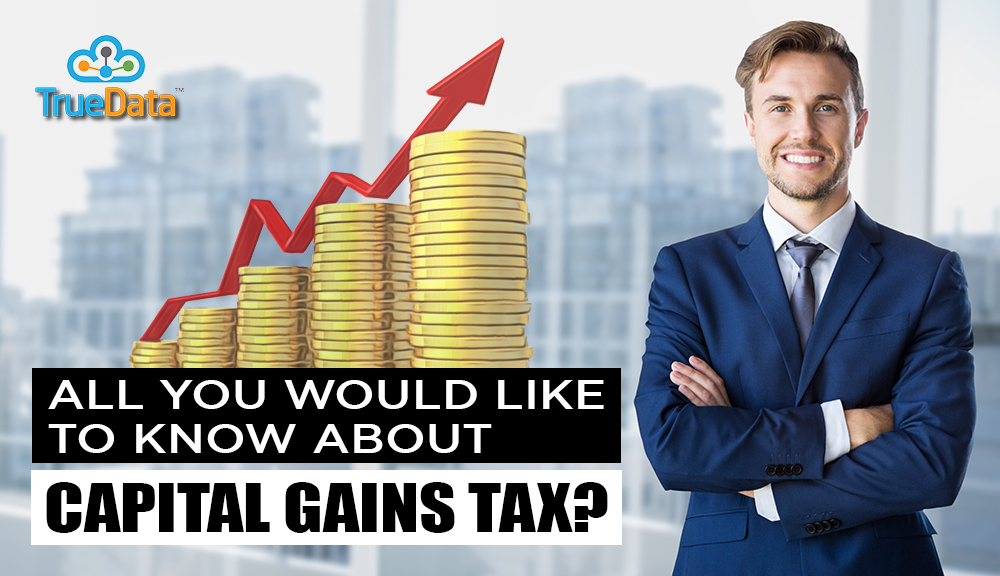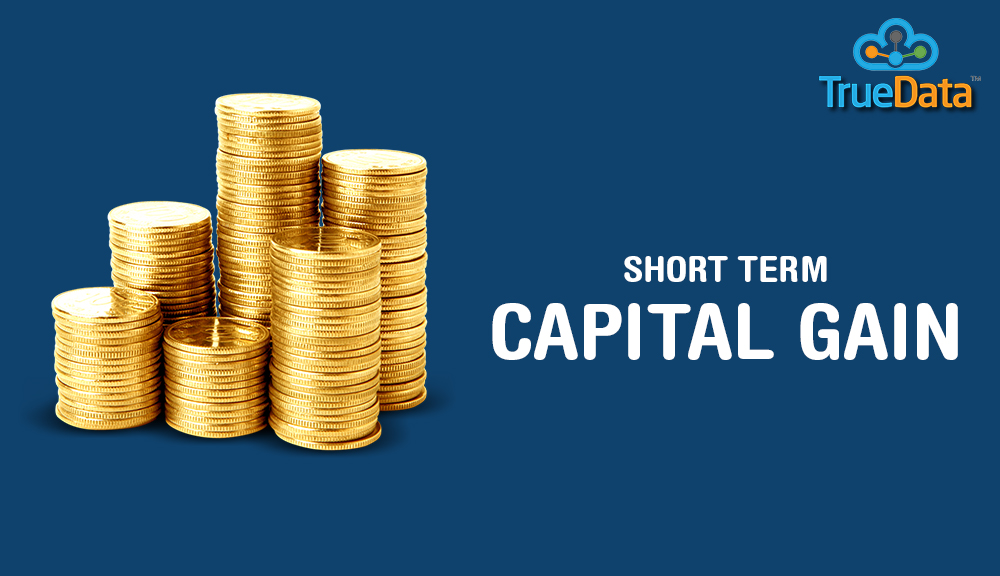Updated : 17 Oct 2024

When put in simpler terms, any gain or profit that comes from the trade of a ‘capital asset’ is termed a capital gain. The benefit or profit inherited falls under the category of income and is taxed under the separate head of 'Capital Gains' under the Income Tax Act 1961. The tax is levied in the year of transfer or registration of the capital asset. Capital gains are further classified as short-term or long-term capital gains tax based on the period of holding of the capital asset. Capital gains are applicable on buying or selling of capital assets, therefore, capital gains tax is not applicable on inherited properties at the time of inheritance. However, when such an inheritance is sold, the transferor will have to pay the capital gains tax at applicable rates at the time of such sale. House property, vehicles, land, patents, buildings, machinery, leasehold rights, and jewellery, among others, come under the examples of capital assets.
Indian governments define assets as short or long-term based on the Income-tax Act, of 1961. Depending on the period for owning an asset, profits on investment can be classified into;
 Short-term capital gains tax refers to the tax imposed on gains made from the selling of an asset held for a short time which is 12 months (in the case of listed assets) and 24 months in the case of all other assets. Listed assets include stocks, equity funds and units of business trust (InvIT and REIT).
Short-term capital gains tax refers to the tax imposed on gains made from the selling of an asset held for a short time which is 12 months (in the case of listed assets) and 24 months in the case of all other assets. Listed assets include stocks, equity funds and units of business trust (InvIT and REIT).
After considering the entire value of the asset, subtract the expenses acquired in association with the transferal. Moreover, deduct the price of improvement and acquisition expenses. The remaining amount comes under short-term capital gain, which will fall under STCG.
If you hold the following assets for 12 months or less, they come under short-term capital assets.
After the categorization of assets as short-term, an individual has to pay the tax as per the applicable rates. After the amendment in Budget 2024 for capital gains, the applicable rate for STCG on listed assets is changed from 15% to 20%. For all other assets, there is no change in the applicable STCG rate, which means STCG for such assets will be based on the applicable slab rates of the taxpayer.
 The tax imposed on gains made from the selling of an asset held for a government-set long time is called long-term capital gains tax. The tax generated for assets such as share-oriented products or real estate comes under the category of long-term capital gain.
The tax imposed on gains made from the selling of an asset held for a government-set long time is called long-term capital gains tax. The tax generated for assets such as share-oriented products or real estate comes under the category of long-term capital gain.
Post the amendment in Budget 2024, Long-term capital gain is taxed at a flat rate of 12.5% without the benefit of indexation. The current rate of 12.5% is applicable to all long-term assets which is a deviation from the previous tax structure where equity and non-equity assets were taxed at different rates. This rate is applicable from 23rd July 2024 and the basic exemption limit has been increased from Rs. 1,00,000 to Rs. 1,25,000 for the whole year. The government has provided small relief for the real estate transactions executed on or before 23rd July 2024, where the LTCG can be calculated at a flat rate of 12.5% without the benefit of indexation or at 20% with the benefit of indexation at the choice of the taxpayer. However, this benefit is not extended to any transaction entered or executed after 23rd July 2024.
The definition of LTCGT differs for different types of products. For instance, it is more than 24 months for housing property or debt mutual funds and more than 12 months for listed securities as mentioned above.
 One can maintain Capital gains tax exemptions either partially or fully. For instance, if the buying cost is Rupees 80 lakhs and the selling cost is more than Rupees 1 crore (i.e. a profit of Rupees 20 lakhs). Additionally, a deposit of Rupees 50 lakhs is made, and then as per the exemptions allowed by the Indian government, half the capital profits will go into the exemption. The government will apply the tax only on the other half.
One can maintain Capital gains tax exemptions either partially or fully. For instance, if the buying cost is Rupees 80 lakhs and the selling cost is more than Rupees 1 crore (i.e. a profit of Rupees 20 lakhs). Additionally, a deposit of Rupees 50 lakhs is made, and then as per the exemptions allowed by the Indian government, half the capital profits will go into the exemption. The government will apply the tax only on the other half.
If you use the selling price of a housing property to buy another housing property, then the capital profits on the sale will be under an exemption. However, there are always terms & conditions that have to be followed;
If you are selling an asset such as agricultural land, valuable artifacts, or jewellery within 10 km of a place, then you can use the benefit of section 54F. Section 54F rewards a reduction for the acquisition of real estate from the profits of the trade of any capital asset. Read on the following terms & conditions for section 54F;
As a part of the capital gains account scheme, the investor can transfer the profits before the scheduled date for registering returns. This step will be beneficial in availing of the benefits of the above-mentioned sections. These sections are useful even if a person has not bought a housing property; but, make sure to transfer or construct the property in the specified period.
The REC (Rural Electrification Corporation) and NHAI (National Highways Authority of India) issued the Capital Gains Bonds that are suitable for exemption from capital profits tax of up to Rupees 50 lakhs. These exemptions have a term-end of five years and offer a fixed profit rate that is currently 5.25%. The interest rate on all the capital gains bonds is taxable.
 One should always carry out taxation in a legitimate procedure. This will efficiently reduce the entire tax return produced by an investment.
One should always carry out taxation in a legitimate procedure. This will efficiently reduce the entire tax return produced by an investment.
One can move the capital damages ahead to succeeding years to discredit any interest in the future. This will help in decreasing a taxpayer's expense burden.
Under these plans, you can take out the retirement money and be in a lower tax section. The retirement money will also multiply in a tax-free zone.
Around the time of retirement, you should think about waiting till the time you quit working to trade valuable assets. If your retirement asset is low then the capital gains tax at the time of retirement will also be low. If you are lucky then you would not have to pay capital gains tax at all.
You should remember to make the new purchase of the housing property, one year before trading the old possessions. If you are selling the property a year after its possession, then make sure to find out the original trade price of the property. These strategies will come in handy at the time of larger trades than the smaller ones. Also, it will be beneficial if you fall under the higher tax bracket instead of the lesser ones.
There are only a few methods that are aforementioned by which a person can decide to save the capital gain tax on any property. One way to both decrease inequality and increase revenue is to change the assessment of capital gains. Another way of the leading proposals is to charge capital gains as they accumulate rather than waiting to sell out the property.

The Union Budget 2025 created a huge buzz due to its changes in the income tax s...

A famous quote by legendary investor Mr. Warren Buffet: 'Someone's sitting in th...

'Mutual funds' - A generation of investors has grown up listening to these words...